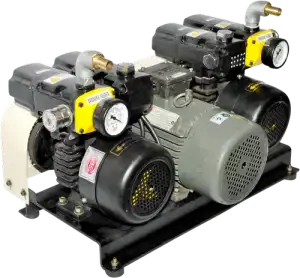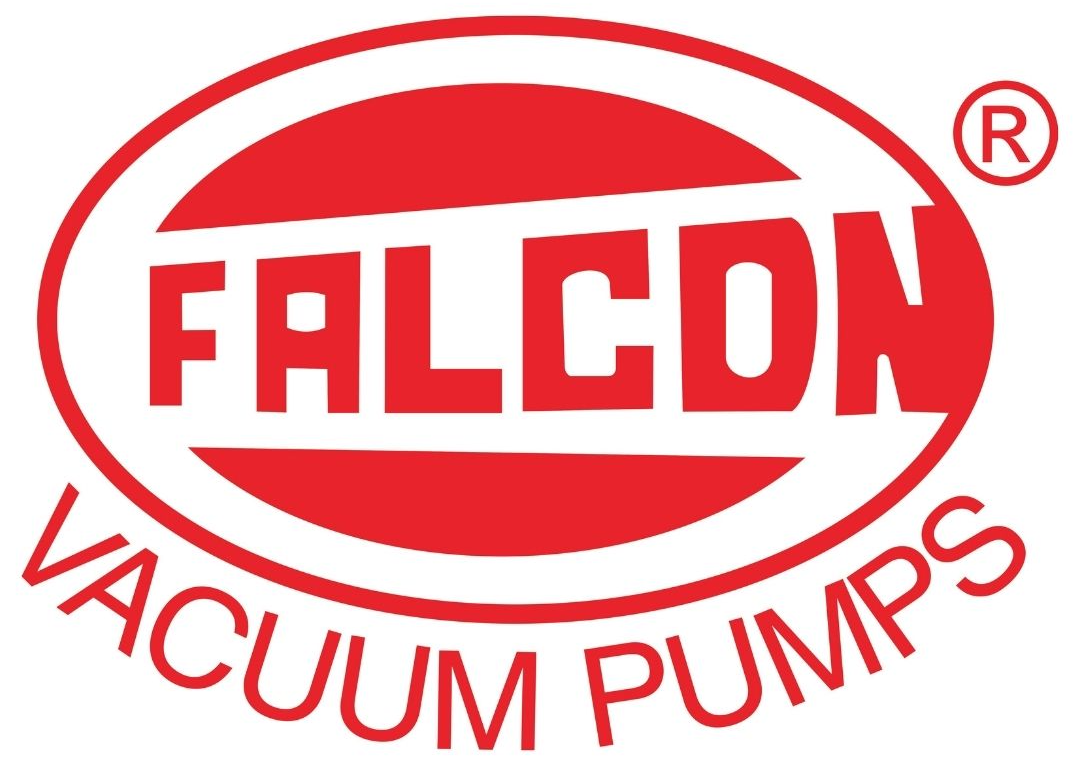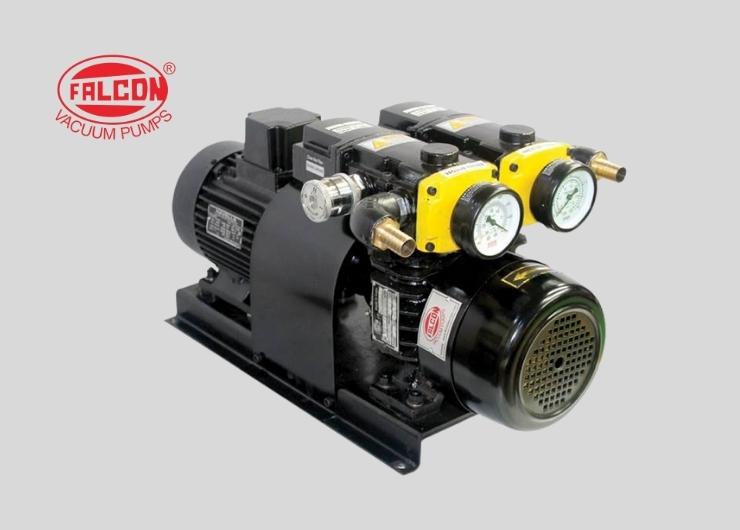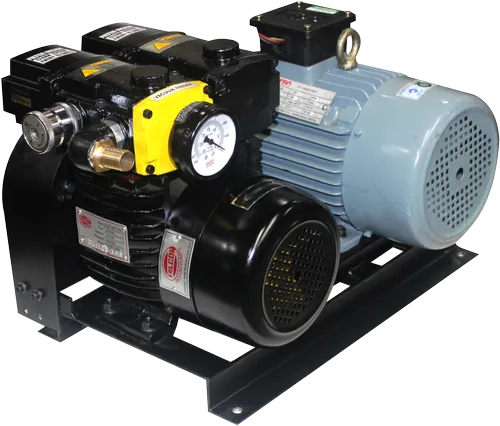Dry vacuum pressure pumps (also known as dry vacuum pumps or dry pumps) operate based on the principle of gas compression by mechanical means, without the use of any liquids or oils to seal or lubricate the moving parts. They are commonly used in a wide range of industrial and scientific applications that require clean and reliable vacuum pumping.
The basic mechanism of dry vacuum pumps involves the use of rotating components that compress the gas and move it from the inlet to the outlet of the pump. The main types of dry vacuum pumps are:

Screw pumps: These pumps use two or more intermeshing screws that rotate in opposite directions to compress the gas. As the screws rotate, the gas is trapped and compressed between the screw threads and the pump casing and is then discharged at the outlet.
Claw pumps: These pumps use two claw-shaped rotors that rotate in opposite directions within a housing. The gas is sucked into the space between the rotors and the housing and is compressed as the rotors mesh together. The compressed gas is then expelled through the outlet.
Roots pumps: These pumps use two or more interlocking lobes or roots that rotate in opposite directions. The gas is trapped between the lobes and the housing and is carried around to the outlet as the lobes rotate. This action compresses the gas and creates a vacuum.
Scroll pumps: These pumps use a spiral-shaped scroll that rotates in a circular motion within a fixed scroll. The gas is drawn in between the two scrolls and compressed as the scrolls rotate, before being expelled at the outlet.
Dry vacuum pressure pumps offer a number of advantages over other types of vacuum pumps, including:
Low maintenance: Dry vacuum pressure pumps do not require oil or other fluids to operate, which means they have fewer parts to maintain or replace. This can result in significant cost savings over the life of the pump.
Low contamination: Because there is no oil or fluid used in the operation of dry vacuum pressure pumps, there is less chance of contamination of the pumped gas or of the environment in which the pump is located.
High efficiency: Dry vacuum pressure pumps can achieve high levels of vacuum with relatively low energy consumption, making them an energy-efficient choice for many applications.
Wide range of applications: Dry vacuum pressure pumps can be used in a wide range of applications, including in research and development, manufacturing, and environmental testing.
Ease of installation: Dry vacuum pressure pumps are generally easy to install and operate, which can save time and money in the setup and maintenance of a vacuum system.
Reduced noise: Some dry vacuum pressure pumps operate at lower noise levels than other types of vacuum pumps, which can be an advantage in some settings.
In all cases, the dry vacuum pump is able to create a vacuum by continuously compressing the gas and moving it from the inlet to the outlet of the pump, without the need for any lubrication or sealing fluids. Overall, the advantages of dry vacuum pressure pumps make them a popular choice for many applications that require reliable, efficient, and low-maintenance vacuum pumping.




